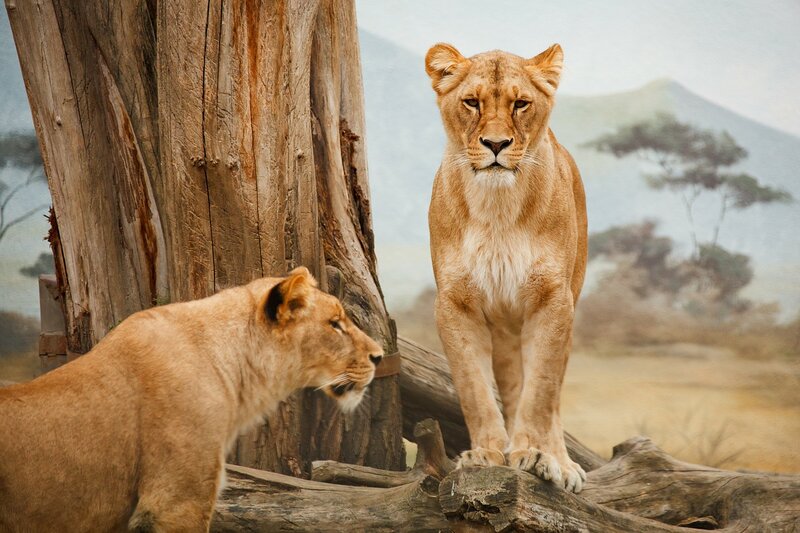Wildlife Conservation Day. In celebration of Wildlife Conservation Day, which aims to bring awareness to the plight of wildlife globally in the age of climate change, we take a look at the benefits of wildlife refuges. These sanctuaries, carefully preserved and nurtured, serve as vital ecosystems that play a crucial role in safeguarding our planet’s rich natural heritage. Beyond being a refuge for wildlife, these protected areas offer a myriad of benefits that extend far beyond their boundaries, benefiting both nature and humanity in remarkable ways.
—
1. Health Benefits
There is a growing body of research that shows that spending time in nature can improve mental and physical well-being. In 2017, a Wildlife Trusts’ report entitled, “The Health and Wellbeing Impacts of Volunteering with The Wildlife Trusts” found that amongst those with reported mental health issues, 69% of those who spent time involved in environmental conservation projects felt an improvement during a six-weeks period. Further, a study from Scientific Reports finds that only two hours per week is needed to reap nature’s calming benefits.
Many wildlife refuges reinforce this health- nature connection by hosting family walks, biking tours and exercise classes.
2. Resilience Against Storms
Wildlife refuges can help reduce the impact of natural disasters on local communities. For example, during Hurricane Harvey in 2017 in the US, wetlands at Anahuac National Wildlife Refuge and McFaddin National Wildlife Refuge held back the saltwater surge from affecting a petrochemical refinery complex near Houston.
They also help to control flood and erosion by managing the vegetation and improving stream quality. For example, in three days after Hurricane Florence in 2018, Waccamaw National Wildlife Refuge soaked up almost 100 billion gallons of water from the Pee Dee River, sparing some South Carolina communities from flooding.
You might also like: 5 Reasons Why Conservation Efforts Need to Support Community Livelihoods in the Decade Ahead
3. Pure Air and Water
Plants, trees and shrubs in wildlife refuges absorb carbon dioxide from the atmosphere and purify the air we breathe. They also improve local water quality- marsh plants found in refuges filter pollutants and excess nutrients from water before it flows into streams, rivers and lakes that supply communities with drinking water. Further, freshwater mussels are also efficient water purifiers- one mussel can filter 10 to 20 gallons of water per day by removing small particles and contaminants.
4. Economic Benefits of Wildlife Refuges
In the US, for every USD$1 that Congress spends on the Refuge System, wildlife refuges generate nearly $5 in local economies. In 2017, 53 million people visited wildlife refuges in the US, which generated about $3 billion in economic activity and supported over 40 000 jobs. Interestingly, in some areas, wildlife refuges increase the value of nearby homes.
5. Wildlife Refuges Protect Cultural Heritage
Refuges conserve, restore and display thousands of cultural artefacts to allow citizens to learn more about and connect deeper with a country’s history. In the US, some of these include dinosaur fossils and other archaeological remains, Civil War-era artefacts and World War II sites.
6. Reduced Risk of Fire
Fire managers in wildlife refuges routinely burn, cut or chemically treat overgrown brush, trees and logging debris that can fuel wildfires. These controlled burns improve wildlife habitat and reduce the cost of suppressing major wildfires.
You might also like: The Impact of Wildfires on Biodiversity and the Environment
7. Wildlife Conservation
National wildlife refuges conserve America’s fish and wildlife. Visitors may hunt, but there are strict controls in place to ensure that hunting is done sustainably and safely.
50 years ago, bald eagles, alligators, grizzly bears, California condors, Louisiana black bears and whooping cranes all were at risk of extinction. Refuges have helped protect these species by providing healthy habitats.
8. Wildlife Refuges Protect Biodiversity
Ecosystems with a high level of biodiversity are generally more stable and healthy than others. Having a more biodiverse ecosystem buffers communities from environmental stressors and allows them to recover more quickly after disturbances.
Refuges encourage biodiversity. Among the most biodiverse refuges are Santa Ana, Lower Rio Grande Valley and Laguna Atascosa. Their south Texas counties contain 1 200 plant species, 300 butterflies and 700 vertebrates.
According to the UN, at least one million animal and plant species are threatened with extinction worldwide. It is celebrations like Wildlife Conservation Day that reinforce the message that we need to rethink our relationship with nature, ending our wanton invasion of natural habitats for resource extraction and restoring degraded landscapes to their former glory.
You might also like: 10 of the World’s Most Endangered Animals in 2023



















